Car signage is an effective way to advertise your brand while on the move, turning your vehicle into a mobile billboard. However, exposure to harsh weather conditions, especially the intense Australian sun, can cause vinyl signage to fade, crack, and peel over time.
Understanding and addressing problems early can help prevent decal peeling and ensure a professional appearance. To maintain the car signage, you can take multiple steps, including:
- Choosing high-quality materials
- Regular cleaning
- Adding protective coatings
- Assessing the problems after starting peeling and fading
- DIY or professional fixing
In this guide, we will analyse causes, prevention, and repair strategies to keep your vehicle graphics care routine effective.
1. Common Causes of Peeling and Fading in Car Signage and Preventative Measures
To maintain your vehicle signage, it is crucial to learn which factors can cause your car signage to peel and fade.
Understanding the reasons will help you to take effective measures for proper car signage maintenance.
Here are the reasons your car signage can fade and peel for.

1.1 Environmental Factors Affecting Vehicle Graphics
Weather conditions play a significant role in signage fading. In Australia, there are some of the highest levels of UV radiation. Such a level of intense UV exposure weakens your car signage’s adhesive bonds and causes colours to fade.
UV protection for car graphics is essential to combat the damage caused by constant sun exposure.
Rain and humidity also impact adhesive failure in car decals. For example, Brisbane has high humidity year-round and can reach up to 65-70% from January to March.
Queensland, on average, does have 11.7% more rainfall during the 2023 season than the 1961-1990 average.
So, when moisture seeps under the vinyl, it weakens adhesion. This leads to the bubbling or peeling of your car signage. Dust, dirt, and pollution further degrade the material, making maintaining car wraps crucial for longevity.
Australia’s climate varies across regions, with some areas experiencing extreme heat while others face frequent storms. Vehicles that are frequently exposed to high levels of UV radiation, storms, etc., without protection will show signs of fading much faster.
Similarly, vehicles parked near coastal areas may experience salt buildup, accelerating material degradation.
Prevention: Implement Protection Against UV and Environmental Factors
- To protect vehicle decals, park your vehicles in the shade or garage.
- Use wax or ceramic coatings to add a protective layer. This offers UV protection for car graphics.
- Another useful approach is applying a laminate over the vinyl. However, you can laminate after starting fading. But laminating before fading is highly recommended so that fading doesn’t happen. This provides extra durability and improves signage fading solutions by shielding against UV rays and harsh weather.
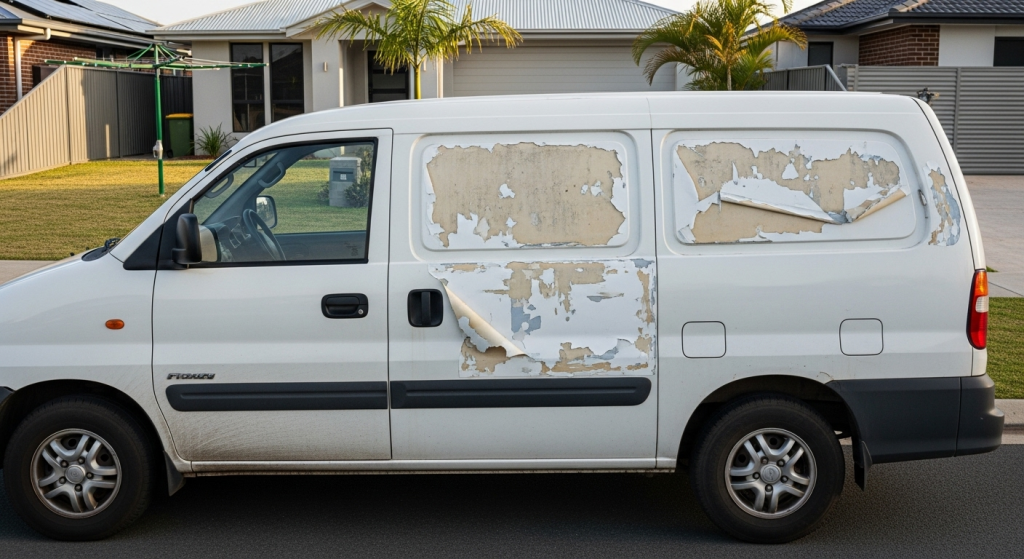
1.2 Quality of Materials and Printing Methods
The type of vinyl used determines how long signage lasts.
- Calendered vs. cast vinyl is an important distinction. Calendared vinyl is cheaper but less durable. Cast vinyl, on the other hand, is more flexible and resists shrinking. This makes it ideal for extending decal lifespan.
- High-quality ink and laminates also affect durability. Poor-quality ink fades quickly, requiring early replacement. But high-quality ones last long without fading.
Prevention: Opt for High-Quality Materials
- Cast vinyl is more durable, while calendared vinyl is best for short-term applications. So, for long-term durability, opt for cast vinyl.
- Opt for high-quality signage-printing inks and UV-resistant laminate. Your high-quality vinyl selection ensures that signage remains vibrant for years.
1.3 Installation Issues Leading to Damage
Incorrect installation is a major cause of peeling vehicle decals. This drives for repairing damaged car decals too frequently.
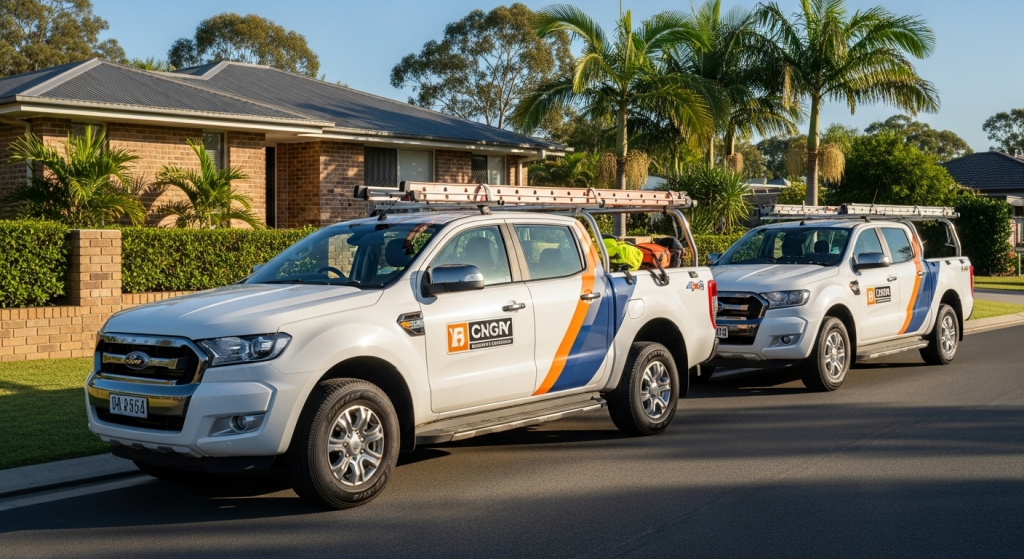
Installation Temperature
The installation temperature during application significantly affects adhesion. Installation temperature here means environmental temperature. To prevent lifting or bubbling, vinyl should be applied at optimal temperatures, generally between 15°C and 25°C.
Also, the heating temperature should be around 90 degrees Celsius because most vinyls start to lose their memory at 90 degrees Celsius.
- (Vinyl memory: In vinyl decals, “memory” refers to the material’s natural tendency to return to its original shape after being stretched or manipulated. When vinyl is heated to around 90°C (180°F) or higher, its memory begins to break down. This means it will retain its new shape better and adhere to complex surfaces.)
Installation Skill
A poor decal installation can also shorten the decal’s lifespan. If air bubbles are trapped or edges are not properly sealed, the vinyl will start peeling sooner.
If you do DIY installation, this can lead to adhesion issues, too. This will happen especially if surfaces are not properly prepared. Dirt and grease residue must be completely removed before application.
Otherwise, the decal may not adhere correctly, causing premature peeling and requiring costly reapplications.
Preventive Suggestion: Ensure Proper Installation
- Hire professional vehicle wrappers to avoid bubbles, wrinkles, and early peeling and provide long-term value. A professional decal installation ensures the vinyl adheres correctly. This prevents future peeling or lifting.
- The installation temperature must be within the recommended range.

2. Steps to Take When Car Signage Starts to Peel or Fade
When your car signage is already starting to peel or fade, you should take the following steps to stop further damage.
2.1. Assess the Extent of the Damage
The first step is determining the level of damage. Small peeling areas can often be fixed, but widespread issues may require a full replacement.
- If the colour is fading evenly, apply a UV-resistant laminate. UV-resistant laminate is a material that resists fading from UV radiation/harsh sunlight. Though this can’t regain the primary state of the signage, it can slow further deterioration.
- If peeling is localised, press the vinyl down carefully. This may temporarily prevent it from worsening.
2.2. DIY Fixes vs. Professional Repairs
Minor vinyl decal upkeep can be handled at home with proper tools. You can use heat guns or adhesive promoters to reapply lifted edges. However, these fixes are temporary.
So, if the damage is severe, you should go for professional intervention.
For extensive fading or peeling, professional decal installation ensures better results. Experts use high-quality adhesives and precision techniques that can restore the signage efficiently.
2.3. Replace or Upgrade Car Signage
Well, if signage is beyond repair, consider replacing it with a high-quality vinyl selection. Because severely damaged or faded car signage can’t keep its appeal in the long run.
Modern materials offer better UV protection for car graphics and improved weather resistance.
When replacing signage, upgrading to better materials, such as cast vinyl, can help in extending the decal lifespan.
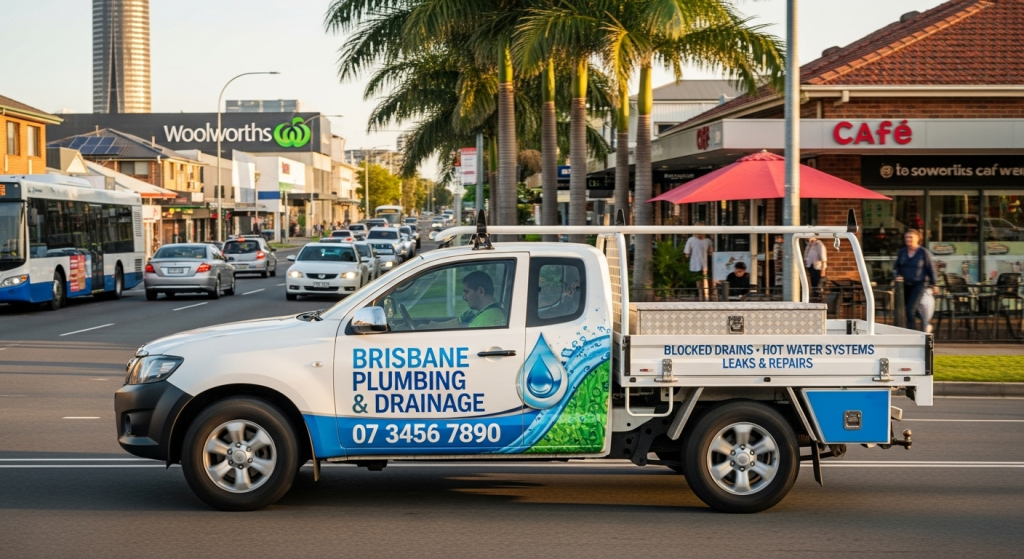
3. Implement a Regular Maintenance Schedule to Maintain Car Signage
Well, you may replace or repair your car decals after they start to peel or fade. But what if you schedule regular maintenance to prevent it so that peeling and fading don’t happen?
Setting up a regular maintenance schedule. Routine checks ensure early detection of minor wear and tear before it worsens. A proper regular maintenance schedule for car signage should follow these intervals:
- Weekly Schedule
Hand wash the vehicle with mild soap and water to remove dirt, dust, and pollutants that can degrade the vinyl. Inspect for minor lifting or bubbling.
Simple habits like gentle hand washing with mild soap and water help in cleaning vehicle signage without damaging the adhesive or the print.
Regular inspections prevent dirt buildup, which could cause adhesive failure in car decals. Periodic reapplication of protective coatings also helps keep the signage looking new.
Avoid high-pressure washes as they can force water under the vinyl. Also, be mindful of using harsh chemicals, as they contribute to adhesive failure in car decals.
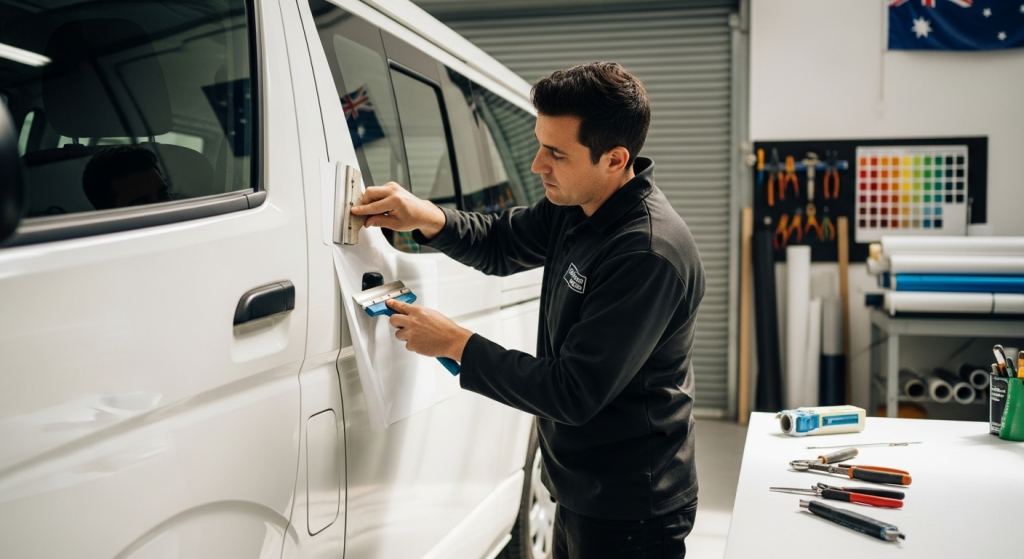
- Monthly Schedule:
Apply a UV-protective spray or wax around the decal to prevent fading. Avoid using wax directly on the edges of the vinyl.
Waxing around decals provides extra protection without causing edges to lift. Also, use a microfiber cloth instead of abrasive brushes when whipping or rubbing the signage surfaces on your vehicles. They help you to avoid scratches.
- Every 3 to 6 months Schedule:
Conduct a detailed inspection of all decals, checking for signs of peeling, cracking, or fading. If necessary, reapply edges with heat or adhesive promoters.
- Annual Schedule:
Have a professional evaluate the signage, especially if exposed to extreme weather conditions. A professional can suggest repairs or protective coatings to prolong the lifespan.
Professional evaluations every six to twelve months ensure that any potential issues are addressed before they require repairing damaged car decals.
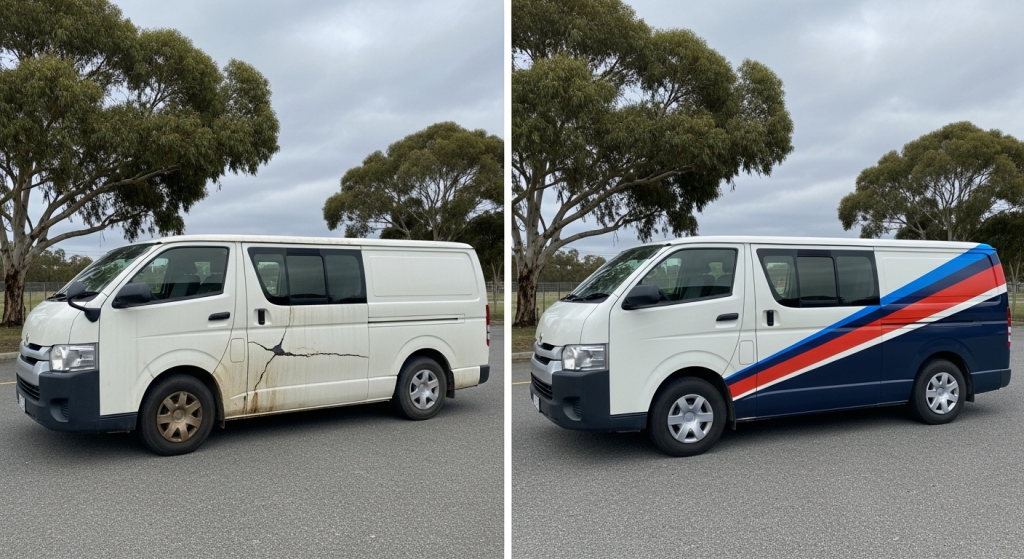
Final Thoughts
Proper car signage maintenance keeps vehicle branding in top condition. Regular care, cleaning, and preventing peeling extend its lifespan. Addressing fading early prevents costly replacements, while durable materials ensure longevity. Investing in high-quality vinyl and expert installation guarantees lasting results.
At Signage 4Business Group, we provide regular inspections and maintenance, along with custom signage solutions. If your car signage is fading or peeling, we can restore it if repairable or replace it with premium materials. Our professional services ensure vibrant, long-lasting signage that increases your brand’s visibility for years. Contact us today for expert care and top-quality replacements.